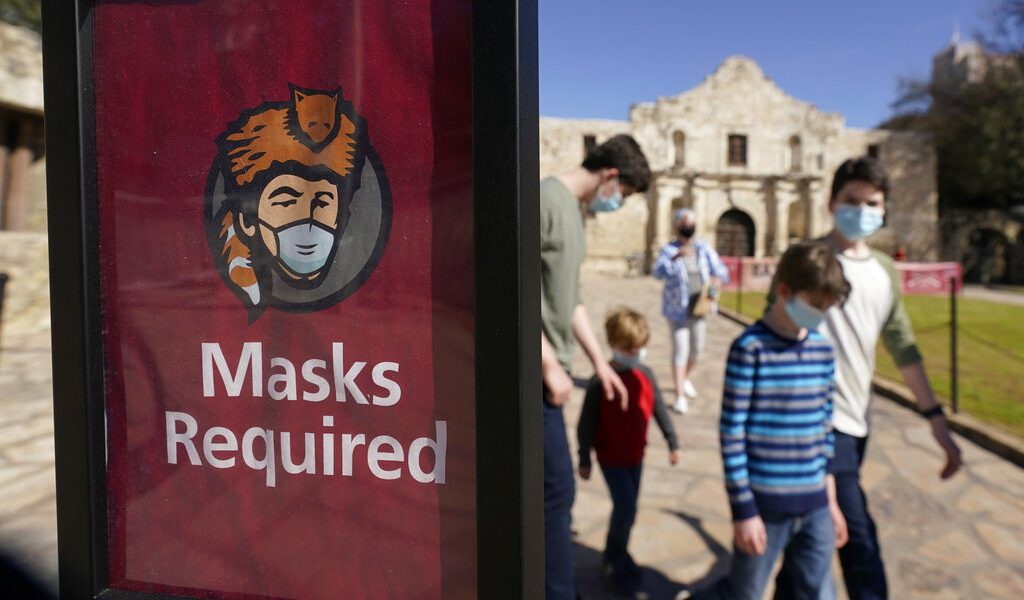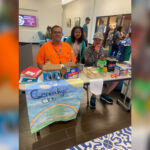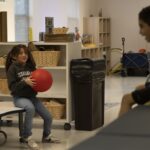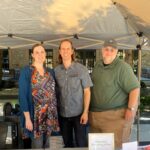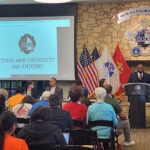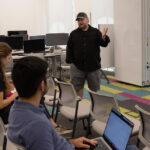In March 2020, finance junior Jose Murillo said he believed the reaction to COVID-19 should not have been as extreme because the mortality rate was low and a cure would be found quickly.
“With that rate being so low, I think that we’ll find a cure before it gets out of control and causes more serious damage,” Murillo said in a Mesquite story posted March 6, 2020.
Nine months later Murillo and his family contracted COVID-19. Today, he remains as hopeful as he was last March, citing the progress being made with vaccines.
“So, the virus is nothing to scoff at or be like, ‘Oh we’re done, we’re out of here”; we still got some time,” Murillo said in a phone interview March 19. “But it’s not going to be as long as we initially thought in my opinion. And I’m still as optimistic as I was last year.”
The Mesquite reached out to Murillo, other students and a staff member quoted in last year’s story. They said the pandemic has provided challenges, but none they haven’t been able to overcome.
History senior Jorge Escobedo said in March 2020 he was worried about Lackland Air Force Base being a quarantine site after an outbreak in Japan.
“I think that the quarantine is a smart idea, but those people shouldn’t have been brought over,“ Escobedo said of the evacuees in the story. “That is a huge risk to us, and many things could happen.”
The Mesquite reconnected with him this month to see if his opinion had changed, and his feelings remained.
“It has a role to play in the pandemic making it to the United States,” Escobedo said in a phone interview March 9.
The pandemic hit close to home for Murillo.
He and his family tested positive for the virus on Dec. 11, 2020. He spent his winter break locked inside, unable to taste and in bed.
“I would feel fine in bed and as soon as I went up to get water, I felt like I ran a mile,” Murillo said. “It was very tiring.”
Murillo said he discovered his taste was gone while eating an orange that gradually started tasting bland.
“To check, I got a piece of the orange peel and I bit into it and I couldn’t taste it,” Murillo said. “All I can feel is the burning sensation from the peel itself.”
Murillo gained his taste back but his body felt exhausted. He said it didn’t physically restrain him when returning back to his job except the effect it had on his lungs after walking.
He said it felt like his lungs were on fire, as if he ran three marathons.
Murillo said his mom felt the same way, but his dad had it worse. He was hospitalized for six days with pneumonia and did not feel normal again until two months later.
Murillo said it wasn’t as scary for him, but “it was scary for someone like my dad who was a health risk.”
Like most universities last year, Texas A&M University-San Antonio took measures to prevent health risks to students.
The start of the pandemic led to university events being canceled, such as the alternative spring break planned by The Mays Center for Experiential Learning and Community Engagement. Nine students were supposed to volunteer at a special-needs school in Dominca, an island in the Eastern Caribbean.
Edwin Blanton, executive director of The Mays Center, said in the March 6, 2020 story he was disappointed the trip was canceled but knew the coronavirus outbreak was serious. The Mays Center has been able to work through the pandemic with adjustments being made.
“A lot of things changed,” Blanton said in a phone interview March 15. “But really almost everything and even more has moved to a virtual environment.”
Blanton said students had gathered “hundreds of pounds of school supplies” from a drive they held for The Alpha Centre in the Commonwealth of the Dominica. Instead of visiting in person, they were able to send two shipping barrels of supplies to the school.
A&M-San Antonio opened its campus in fall 2020 with 10% of classes being in-person, after conducting online classes for the spring and summer.
Escobedo said he prefers face-to-face learning.
“I think they are good, but I find it hard to be motivated to do the work,” Escobedo said of virtual classes. “I like engaging with the professors when learning.”
Escobedo, who works for a construction company, said the pandemic affected his work schedule.
“I never had any serious problems, but getting consistent hours at work was a problem until September,” he said.
The pandemic also changed work and school for Murillo. In the beginning, being stuck inside was difficult for him as well as staying motivated for school.
Meanwhile, he had just transferred to a new position in esports as the events coordinator for the team right when the pandemic began.
Murillo said the department couldn’t hold gaming tournaments or regular events. He said this wasn’t difficult to deal with in the fall semester because they were able to continue with many games for esports being online.
Other offices were also able to adjust to an online platform by offering virtual opportunities.
Despite the pandemic, the Mays Center remained open, working virtually and in-person through different outlets, such as the General’s Store, which remained open. Many of their services continued, most taking an online format while some allowed for face-to-face contact.
Blanton said career advising, career fairs and employee recruitment moved to a virtual outlet. However, they were still able to hold in-person events while following COVID-19 precautions such as some in-person advising drop-ins and events like Choose.Act.Impact, which was held in the fall semester and was held again on Saturday.
“I just think COVID allowed us to really increase some of the things we were doing,” Blanton said.
The Mays Center was already offering virtual career advising before the pandemic began and it has since increased.
“Thankfully we were prepared, and I think that’s also just something that we’ll probably continue to do long after the virus is gone,” Blanton said.
As for the fall 2021 semester, President Cynthia Teniente-Matson said in a Zoom interview March 15 in-person classes will resume at 70% face to face, hybrid or high-flex.
Chancellor John Sharp of the A&M-System emailed the university community March 5, announcing system guidance will be lifted at the end of the spring semester. Each campus will decide how protocols will continue in the upcoming semesters.
The Mesquite will continue updating as plans are announced.
Tristan Haby, Desiree Farias and Veronica Valdes contributed to this story.

